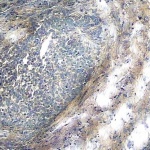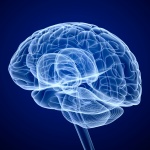
News • Gene-based testing
Skewing the aim of targeted cancer therapies
Headlines, of late, have touted the successes of targeted gene-based cancer therapies, such as immunotherapies, but, unfortunately, also their failures.

Headlines, of late, have touted the successes of targeted gene-based cancer therapies, such as immunotherapies, but, unfortunately, also their failures.

A research team found that in patients suffering from rheumatoid arthritis, a special cell population called innate lymphoid cells are in a state of hibernation which is why these patients suffer from persistent inflammation.

People who survive a stroke or a mini-stroke without early complications have an increased risk of death, another stroke or heart attack (myocardial infarction) for at least 5 years following the initial stroke, found a new study published in the Canadian Medical Association Journal.

A natural compound in strawberries could help treat age-related mental decline and conditions like Alzheimer’s, a new study found.

The UC Davis Comparative Oncology Program joins oncologists at both the vet school and cancer center to test novel treatments on companion dogs with spontaneous tumors that could be effective in human patients with cancer. Human clinical trials could be started this year.

IBA (Ion Beam Applications S.A.), the world’s leading provider of proton therapy solutions and radiation therapy integrated quality assurance (QA) for the treatment of cancer, announces the release of myQA version 2017-001. This new version further enhances the integration of quality assurance across all QA applications, departments and people.

A team of researchers from the University of Würzburg has discovered an interesting enzyme in the pathogens responsible for African sleeping sickness: It could be a promising target for drugs.

Just ten minutes of mindfulness meditation could be used as an alternative to painkillers, according to research by Leeds Beckett University.

Drugs that are used in cancer therapy to erase epigenetic alterations in cancer cells simultaneously promote the production of countless mysterious gene transcripts, scientists from the German Cancer Research Center (DKFZ) now report in Nature Genetics. The substances activate hidden regulatory elements in DNA. The unusual gene activity has the potential to stimulate the immune system – a…

In a new study presented at the 2017 American Thoracic Society International Conference, adult asthma patients treated with bronchial thermoplasty (BT) had fewer severe exacerbations and were able to reduce their ER visits and hospitalizations in the two years following treatment.

A novel treatment offers kidney failure and kidney transplant patients with a rare disorder new hope. The treatment allows targeted elimination of plasma cell clones producing abnormal proteins that deposits in the kidneys and leads to kidney failure, according to new research.

Children with cancer could be spared dozens of doses of general anaesthesia by projecting a video directly on to the inside of a radiotherapy machine during treatment, according to research presented at the ESTRO 36 conference.

Over the next few years, in a research project funded by the EU, an international consortium is developing a new technology for a better treatment of multiple sclerosis. The idea of the innovative “Nose2Brain” approach is to transport a special active substance directly through the nose into the central nervous system.

In some cases, the Lassa virus starts with a fever and general weakness, moving toward headache, muscle pain, possible facial swelling, deafness, and worse. About 15 percent of patients hospitalized with severe cases die. Lassa fever is contagious, endemic in West Africa, and Dr. Anthony van den Pol thinks he can use it to cure ovarian cancer.

Paxman Coolers Limited announced today that The U.S. Food and Drug Administration (FDA) has cleared the company to market the Paxman Scalp Cooling System, a scalp cooling technology that was developed by a British family to reduce hair loss (alopecia) in breast cancer patients undergoing chemotherapy.

Innovative Dolphin® system clinically implemented at the Gaziosmanpasa Hospital, Istanbul, ensuring high quality and efficient radiosurgery and SBRT treatment QA

European Hospital reports a new approach in molecular diagnostics introduced during the IASLC World Conference in Vienna.

A pioneering scalp cooling treatment that prevents alopecia in early stage breast cancer patients undergoing chemotherapy will be showcased at the 15th St. Gallen International Breast Cancer Conference, Vienna.

In a study conducted on mice, researchers found a receptor that could reverse inflammatory responses and combat chronic obstructive pulmonary disease (COPD) and other lung diseases.

New state-of-the-art technology helps clinicians provide personalised pain relief

Biosimilars create opportunities for sustainable cancer care, says the European Society for Medical Oncology (ESMO) in a position paper published in ESMO Open.1 The document outlines approval standards for biosimilars, how to safely introduce them into the clinic, and the potential benefits for patients and healthcare systems.

Have you seen the videos? Perhaps you have read the 20-page paper published in Radiology? At MR 2017 Garmisch you will have the chance to see and hear a live presentation by William Palmer, M.D., Director of Musculoskeletal Radiology & Intervention at Massachusetts General Hospital, a teaching hospital of the Harvard Medical School.

A combination of a diabetes medication and an antihypertensive drug can effectively combat cancer cells. The team of researchers led by Prof. Michael Hall at the Biozentrum of the University of Basel has also reported that specific cancer cells respond to this combination of drugs.
Columbia University Medical Center (CUMC) researchers have created a computational tool that can rapidly predict which genes are implicated in an individual’s cancer and recommend treatments. It is among the most comprehensive tools of its kind, and the first that incorporates a user-friendly web interface that requires little knowledge of bioinformatics.

Faster and better recovery after stroke may be the result of a newly discovered treatment strategy that created new nerve synapses in the brain—a key factor for learning. A study at Sahlgrenska Academy showed improved ability to use the affected paw in mice that received the treatment.